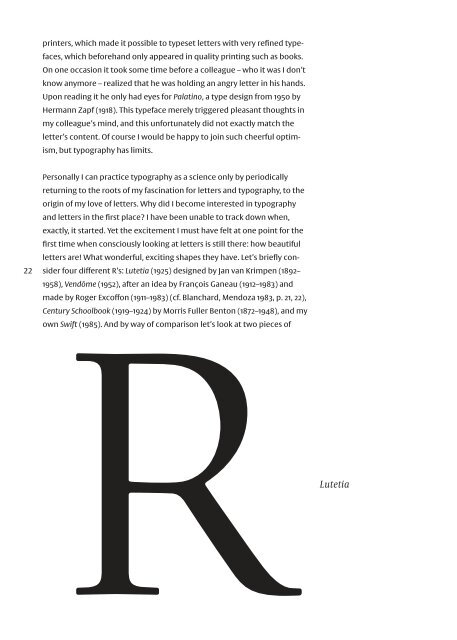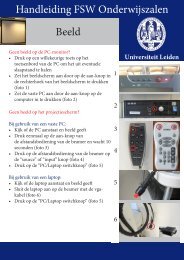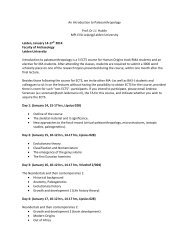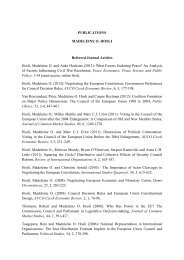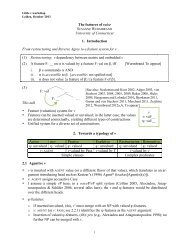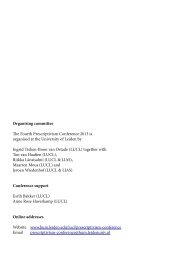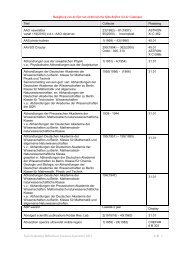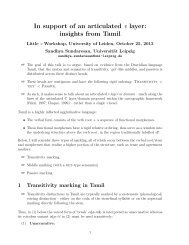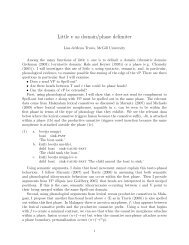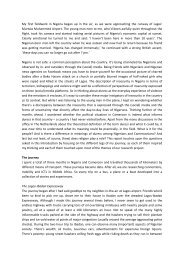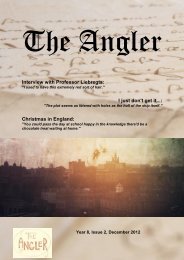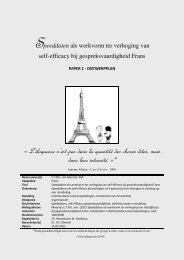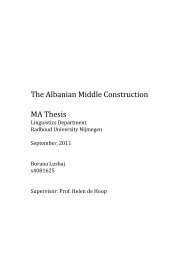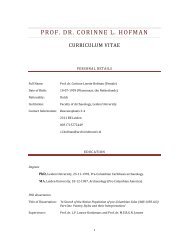Typografie als voertuig van de wetenschap - Universiteit Leiden
Typografie als voertuig van de wetenschap - Universiteit Leiden
Typografie als voertuig van de wetenschap - Universiteit Leiden
Create successful ePaper yourself
Turn your PDF publications into a flip-book with our unique Google optimized e-Paper software.
22<br />
printers, which ma<strong>de</strong> it possible to typeset letters with very refined typefaces,<br />
which beforehand only appeared in quality printing such as books.<br />
On one occasion it took some time before a colleague – who it was I don’t<br />
know anymore – realized that he was holding an angry letter in his hands.<br />
Upon reading it he only had eyes for Palatino, a type <strong>de</strong>sign from 1950 by<br />
Hermann Zapf (1918). This typeface merely triggered pleasant thoughts in<br />
my colleague’s mind, and this unfortunately did not exactly match the<br />
letter’s content. Of course I would be happy to join such cheerful optimism,<br />
but typography has limits.<br />
Personally I can practice typography as a science only by periodically<br />
returning to the roots of my fascination for letters and typography, to the<br />
origin of my love of letters. Why did I become interested in typography<br />
and letters in the first place? I have been unable to track down when,<br />
exactly, it started. Yet the excitement I must have felt at one point for the<br />
first time when consciously looking at letters is still there: how beautiful<br />
letters are! What won<strong>de</strong>rful, exciting shapes they have. Let’s briefly consi<strong>de</strong>r<br />
four different R’s: Lutetia (1925) <strong>de</strong>signed by Jan <strong>van</strong> Krimpen (1892–<br />
1958), Vendôme (1952), after an i<strong>de</strong>a by François Ganeau (1912–1983) and<br />
ma<strong>de</strong> by Roger Excoffon (1911–1983) (cf. Blanchard, Mendoza 1983, p. 21, 22),<br />
Century Schoolbook (1919–1924) by Morris Fuller Benton (1872–1948), and my<br />
own Swift (1985). And by way of comparison let’s look at two pieces of<br />
QLutetia


